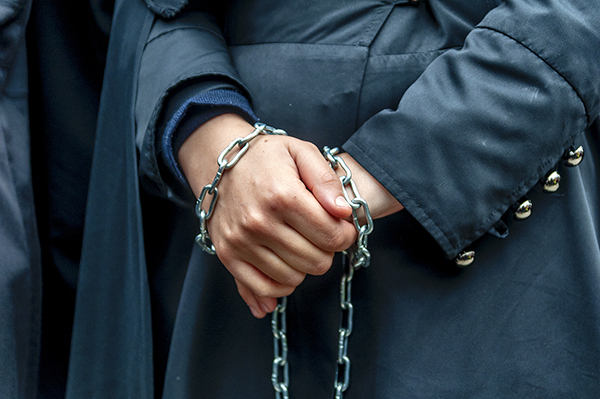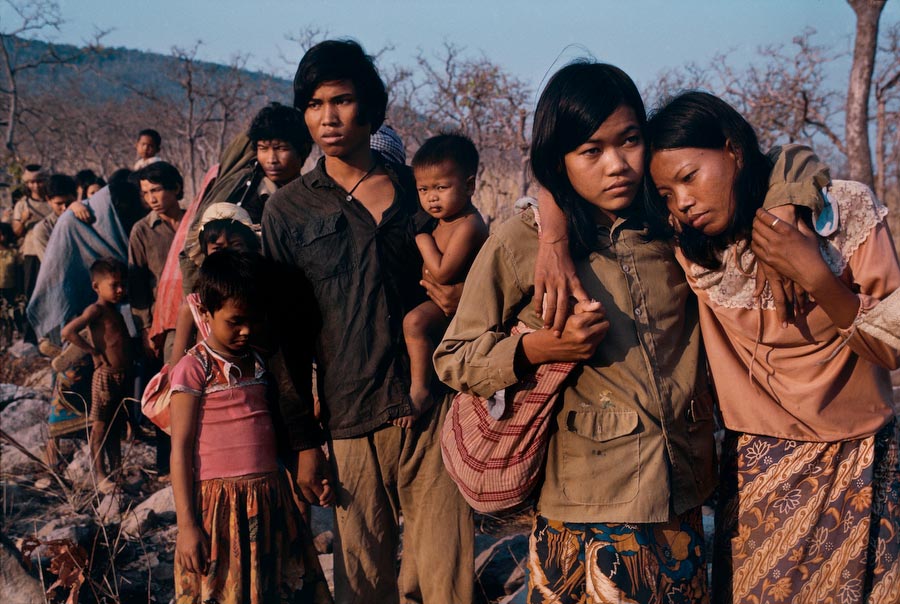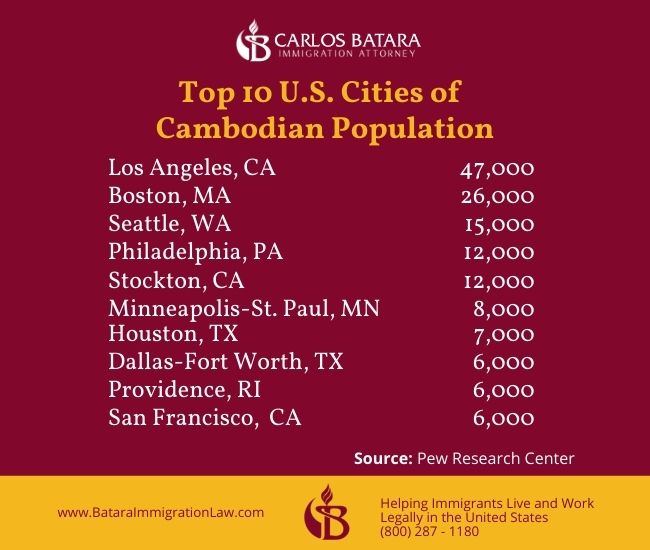
Phorm Tem, a California resident, was deported in October 2017.
In June 2020, he was sworn in as a U.S. citizen, the first and only Cambodian deportee to earn this privilege.
Except for the ending, Tem’s story is symbolic of the plight more than 16,000 Southeast Asian refugees – from Cambodia, Vietnam, and Laos – who fled their homelands as children during the Vietnam War and its aftermath have endured in the United States.
Almost all lived through horrendous situations in their homeland prior to entry. Most lived under terrible circumstances in the U.S. upon their arrival.
The vast majority of the Cambodian deportees have been male, and come from families that escaped genocide. They were relocated by the government to socioeconomically impoverished neighborhoods, where crime and violence was rampant.
Nearly all committed non-violent offenses several years ago, while young adults struggling with life in a new and strange environment. Given the combination of their haunting past and taunting present, the outcome was not surprising.
After serving their punishment, many turned their lives around, raising their own families, and living without further blemish for 20 – 30 years. Yet, they fall under the unforgiving regulations of the Illegal Immigration Reform and Immigrant Responsibility Act (IIRAIRA), passed in 1996.
Cambodian Genocide And Exodus
During the Vietnam War, between 1965 and 1973, more than 2.5 million tons of bombs were dropped on Cambodia – an amount greater than that dropped during World War II – and in an area smaller than New York City.
The bombings opened the door for the rise to power of the Khmer Rouge regime, a brutal movement which sought to take Cambodia back to the Middle Ages, and forced millions of people from the cities to work in labor camps and communal farms in the countryside.
They abolished money, private property, religious practices, foreign clothing styles, and traditional culture. Schools, churches, and government buildings were converted to prisons and reeducation camps. Family relationships were scrutinized, and individuals were forbidden to show affection, humor, or pity.
Seeking to rid the country of persons with “impure consciousness”, about 1.7 to 2.2 million Cambodians, one-fourth of the nation’s population, died at the hands of the Khmer Rouge regime between 1975 and 1979. 50% of the deaths occurred through execution, while the others died from disease, starvation, exhaustion, and malnutrition.
Many public executions were focused on those who had been contaminated by capitalism or suspected of being an intellectual. Several hundreds of thousands of the educated middle-class were condemned and killed for having uncalloused hands, wearing glasses, and knowing a foreign language.
To escape the violence and famine, Cambodians trudged through jungles, rice paddies, and mine fields to refugee camps, many along the shared border with Thailand. These camps were hardly a place of safe refuge.
They were frequently shelled by both Vietnamese and Cambodian forces. Internally, the camps suffered from violence, fighting, rape, and food shortages.

In 1975, the Ford Administration enacted the Indochina Migration and Refugee Assistance Act, which permitted Cambodians to be admitted to the U.S. as refugees.
The first large wave of Cambodian refugees, approximately 6,000, arrived in 1979.
Families were issued special travel documents by the U.S. Department of State. After residing in the United States for a year, the government adjusted their status to lawful permanent residence.
In 1980, the number of Cambodian refugees who came to the U.S. grew to 16,000. A year later, over 38,000 arrived. The influx continued for over a decade.
Between 1975 and 1995, more than 145,000 Cambodians entered the United States.
Most struggled with the adjustment to life in America. They struggled not only to cope with the linguistic, social, and economic pressures of beginning life in a foreign land, but also to overcome the psychological trauma of their past.
Many families lacked a male or father role model.
A Mixed Reception: The Arrival Of Cambodian Refugees In The United States
There were no existing Cambodian ethnic communities when the first wave of refugees arrived. The first settlors moved into Long Beach, California, Lowell, Massachusetts, Lynn, Massachusetts, and Philadelphia, Pennsylvania. Most refugees did not have any family members already living in the U.S.
(Here is a look at the current Cambodian immigration population centers.)

Few had any transferable job skills, due to the mass murders of the intellectual and middle class Cambodians by the Khmer Rogue. The majority of the adult males were fishermen, farmers, and field laborers ill equipped to life in an industrial society.
Many of the women, whose spouses had been killed, had to work outside the home for the first time. According to estimates, up to 70% of Cambodian refugee families had female heads of households.
Women with children had to stay home to take care of them, and were unable to work, take job training courses, or enroll in English As A Second Language classes.
Lacking financial resources, a large percentage of the refugee families were placed into cash assistance programs and settled in low-cost public housing development In some areas, 88% of the Cambodian immigrant residents lived at or below 50% of the area median income.
These neighborhoods were often crime-infested. Gangs and criminals would randomly steal from and rob Cambodian residents, who felt there was nowhere to turn for help.
The language barrier was extremely excruciating. Young children, despite their limited fluency, were often forced to become translators and interpreters for entire families.
Another source of adjustment was that almost all Cambodian refugees suffered from post-traumatic stress disorder, as a result of what they had witnessed and experienced in their homeland. It was not uncommon for older siblings and parents to rely on the youngest children for emotional support.
Due to the dearth of established Cambodia communities, there were few social service programs to help them heal and overcome their mental woes.
Overt acts of bigotry and hatred against the refugees were not uncommon. In both their neighborhoods and schools, student-age Cambodian children experienced discrimination and isolation from peers.
News stories abounded about how they were subject to racial taunting and physical attacks by school mates as they walked from their homes to school and back. .
Predictably, Cambodian youth established gangs of their own as a means of survival.
Pyschologically overwhelmed and unaccepted, some dropped out before graduating from high school. Feeling despair, depression, and anger led many of the male youths to make bad choices, and getting caught up in drug-related criminal activity.
These actions, however long ago, would lead to immigration problems today.
The Impact Of IRRAIRA On Cambodian Refugees
The Illegal Immigration Reform and Immigrant Responsibility Act, commonly referred to as IIRAIRA, was passed in 1996.
Many Cambodian youth who had fled to the U.S. as refugees, and already served their time, were ensnarled by this new law. Facing deportation over 20 years later, the impact of IIRAIRA on Cambodians continues unabated to this date.
In particular, three aspects of IIRAIRA – an evil trilogy of immigration restrictiveness – set the stage for the increasing numbers of deported Cambodians.
- First, the law expanded the list of aggravated felonies, incorporating some minor, non-violent offenses that were neither “aggravated” not “felonies” under state law.
- Second, the law restricted the ability of judges to consider the individual circumstances of a person before ordering deportation if their conviction fell into one of these categories.
- Third, the law was made retroactive – meaning the new rules applied, even if the offense took place several years before IIRAIRA was passed.
Many Cambodians, some of whom had already served their time in jail, were ensnarled by this new law. They were issued a Notice To Appear at Immigration Court, charged under the aggravated felony provisions, and told they had no mechanism to contest their removal back to the country of their origin.
However, until 2002, Cambodian immigrants who were ordered deported under IIRAIRA were protected by the lack of a repatriation agreement between Cambodia and the United States. But that year, the countries reached an accord, opening the door for deportations.
Over the next 15 years, the average number of yearly deportations to Cambodia totaled roughly 45.
In 2017, due to the backlash stemming from human rights concerns raised by Cambodian Americans, the government of Cambodia stopped accepting new deportees. In response, the Trump administration declared the country “recalcitrant” and imposed visa sanctions, barring even high-ranking Cambodian officials and their families from visiting the U.S.
Shortly afterward, Cambodia relented and again began accepting deportees, and in larger numbers than before – even those with decades-old removal orders.
In 2018, the deportations of Cambodian immigrants increased 279% over 2017. Although statistics are not available, the DHS roundups continued into 2019 and early 2020.
At present, the brief pause due to COVID-19 should not be mistaken as a permanent removal policy reversal or a form of deportation defense relief. According to DHS, there are still about 1,772 Cambodians with final orders of removal subject to being detained and deported.

How Tem Survived Deportation And Became A United States Citizen
Phong Tem was 5 years old when his family arrived in the U.S. to escape genocide from the Khmer Rouge.
Although he considered the United States to be his home, like many permanent residents, he never completed the naturalization process.
As a result, upon his conviction of possession of marijuana for sale in 2009, he became subject to the harsh IIRAIRA rules regarding non-violent criminal offenses. In 2011, an immigration judge ordered his deportation.
Since the Cambodian government was reluctant to accept large numbers of deportees, it would not issue travel documents for the deportees. Hence, he was required to check-in annually with the Department of Homeland Security officers.
In October 2017, one month after the Trump-imposed visa sanctions went into effect, Tem was taken into custody in the largest wave of Cambodians detained for deportation ever.
On April 30, 2018, he was returned to Cambodia, a country he had never seen. Like many children of Cambodian refugees, Tem was born in a Thailand refugee camp.
Similar to most Cambodian refugee deportees, upon his homeland return, Tem had no family ties, did not speak the language, and faced cultural barriers.
His family feared for his safety and well-being. They worried about his ability to find work, housing, medical care, and obtain government identification. They were concerned that his return might bring back memories of the terror and trauma experienced as a child.
The day after his removal, Tem’s attorney was able to vacate the conviction because he had not been properly advised about the immigration consequences of pleading guilty in 2009.
Four months subsequent, based on the vacated conviction, an immigration judge reversed Tem’s 2011 deportation order. His permanent resident status was reinstated.
He was reunited with his family in the U.S. on November 2, 2018.
Based on his reinstated status, Tem applied for naturalization. He was sworn in on June 24, 2020, becoming the first Cambodian deportee to return to the U.S. and win a grant of U.S. citizenship.
Unfortunately, out of the thousands of deported refugees from Cambodia, only three others have been successful in their efforts to return the United States.
A Legacy Of Betrayal
In the view of Cambodian immigration advocates, the deportation of Cambodian refugees is a violation of international human rights law. Asylum law is based on a concept of non-foulement that individuals, once granted protection, should not be returned to a place they fled in terror.
They view the story of Cambodia deportations as a story of betrayal. In their perspective, these actions break the promise of protection granted Cambodians for the destruction that the U.S. was partly culpable.
They’re right.
As with other immigrant groups who commit offenses due to post traumatic disorders that stem in part from U.S. actions, a showing of rehabilitation at minimum should be allowed at immigration court hearings.
Yet, under IIRAIRA, Congress stripped away this provision from immigration statutes. The reality remains, however, that no person is morally perfect.
A rational approach to deportation law should be designed to balance deep family roots, community ties, and hardships overcome, vis-a-vis the nature of offenses committed – especially for immigrants who arrived in this country with the government’s support to escape atrocities of civil war and genocide.
The better solution, of course, is to repeal IIRAIRA and create immigration laws that reflect real world problems across the globe, not imaginary xenophobic fears and prejudices.
For that, pro-immigrant reformers must actively reach across their cultural enclaves to build a bigger, stronger coalition of warriors to contest laws which harm all immigrant communities.
And there’s no better time to do so than now.
By Carlos Batara, Immigration Law, Policy, And Politics




